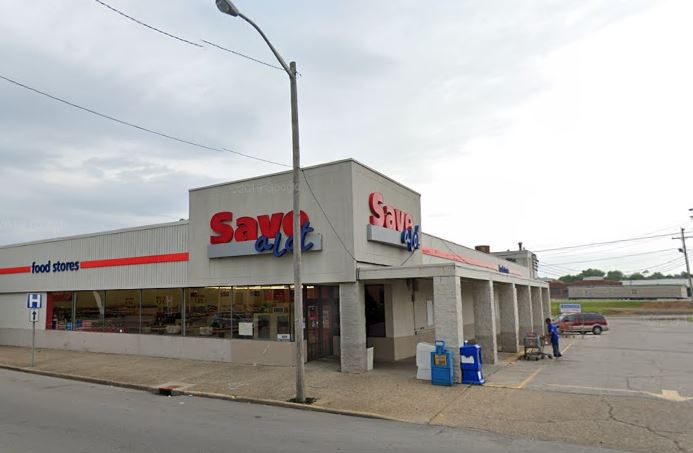In late June Louisville Metro Council passed a budget for the city’s next fiscal year (spoiler alert: the police department was not “defunded” and rent was not canceled). Several local news outlets caught an outlay of $3.5 million “to build a new community grocery store that will most likely be built in the West End.”
There’s a catch. Council says the money is there, but it’s up to Mayor Greg Fischer to offer a plan for its use. Is this to be a one-time corporate chain grocery subsidy, or support to be disbursed across a wider range of recipients, including projects already in the works like Next Door Market?
Perhaps the answer is a cooperatively-owned market, an idea embraced by activist Cassia Herron. In a HuffPost article by Stephen Robert Miller that capably surveys the issue’s nuances, Herron says “systemic reform begins with addressing food insecurity,” although she dislikes the notion of a “food desert.”
In the past five years, more than a dozen grocers have abandoned the city. In West Louisville, a cluster of predominantly Black neighborhoods pocketed between a revitalizing downtown and the deep Ohio River, their exit has left behind a nutritional wasteland. The area is a food desert, though Herron takes issue with that term. A desert is something natural, she said. “The conditions of our neighborhoods are not natural, they’re intentional.”
There are still other dimensions to these considerations of food and health, as here: “Why Is There So Much Fast Food in Poor Urban Areas?”
I’m a downtown New Albany resident, and recently my neighbors seemed surprised to learn that we live in a food desert of our own. That’s because quite frankly my neighborhood is a pocket of gentrification in a city that still records 25% of its residents existing below the poverty line; we all shop where the grocery stores elect to exist because we have cars, money and time to do so.
When the downtown Save A Lot closed last month, few of my neighbors noticed. In my household, we did notice, although it wasn’t a hardship situation. We’d occasionally walk or bike to Save A Lot to buy fruit, vegetables and fill-in items between visits to the supermarket.
But Save A Lot’s customer base wasn’t us, anyway. It was residents of New Albany’s public housing units, which lie a short distance away, and lower-income renters and homeowners living nearby in the section of town yet to be “improved.”
I’m now directing you to a piece by John Boyle, who will explain all of this. Boyle formerly was a reporter at the News and Tribune before moving to WFPL, and one of his first stories at Louisville Public Media was this consideration of New Albany’s own self-engineered food desert: “After Save A Lot’s Closing, Potential For Food Desert Grows In New Albany.”
Since the 1950s, residents of downtown New Albany have bought their food at 624 State St., which was originally a Kroger before becoming a Save A Lot. But on June 20, Save A Lot permanently closed its doors. And while there are large grocery chains like Kroger near the outskirts of town, the city’s core is now lacking a full-service grocery option.
“There’s so many of us over here that are very upset, because sometimes we don’t like the big stores,” said Kimberly Williams, who shopped at Save A Lot frequently over the last 12 years. “[Save A Lot] feels homey. Other stores are big, crowded. I don’t like a crowd like that. I like to keep it simple. I know where everything is. That’s going to hurt.”
Williams lives in the nearby New Albany Housing Authority (NAHA) complex. Every two weeks or so, she would pull a wagon just over half a mile to shop, which would take roughly 30 minutes roundtrip.
One of New Albany’s Kroger stores is a little more than a mile away from the former Save A Lot. Though the increase in distance may seem minuscule, every extra step matters to elderly citizens like Williams. The difficulty is amplified by nearby hilly terrain and the fact that Kroger is located in a large shopping center surrounded by an expansive and busy parking lot, which makes the trip less pedestrian-friendly.
“That’s real rough,” Williams said. “You know what I mean? Because sometimes my wagon gets a little heavy. But you know, that’s how I do it… I’ll pull it home. I’m going to miss that. I am.”
In recent years New Albany as a city has chosen to promote food and dining downtown as a reason for people from other places to come and visit. At the same time, efforts to repopulate downtown with sufficiently-heeled residents who can afford contemporary food and drink have been slow in coming to fruition.
The lives of lower-income residents in New Albany have not improved amid the supposed boom, and many have been displaced (it’s actually a stated goal of city hall in my city to reduce public housing by half). They’re too few for Save A Lot to remain in business, and there aren’t enough higher-paid newcomers to support an upscale grocery downtown.
And then there is COVID-19, which disproportionately affects the health of lower-income Americans while sending a potential wrecking ball into the food and dining segment. Understandably, America’s response is to deny the pandemic’s existence, but that’s for another time.
Meanwhile, we drive to Kroger for groceries, and ignore the folks living alongside the route. It’s almost as if society had planned it that way.























